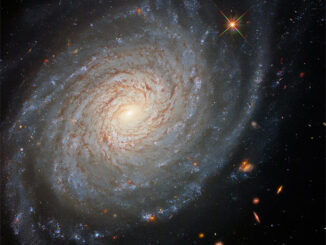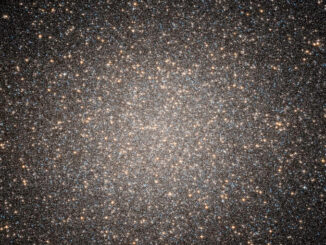M66 is the largest member of the “Leo Triplet,” three closely spaced, interacting galaxies that are well within the reach of relatively small telescopes and thus a familiar target to amateur astronomers around the world. While just a smudge of light in smaller telescopes, M66 is revealed in all its glory in this spectacular shot by the Hubble Space Telescope, showing its asymmetric spiral arms and a displaced core, both likely caused by gravitational interactions with nearby M65 and NGC 3628. This image combines views through near infrared, green and hydrogen alpha filters to show the galaxy’s actual colors.
M66, also known as NGC 3627, is about 35 million light years from Earth and stretches across some 100,000 light years. It was discovered in 1780 by Charles Messier, who promptly added it to his famous catalog.




